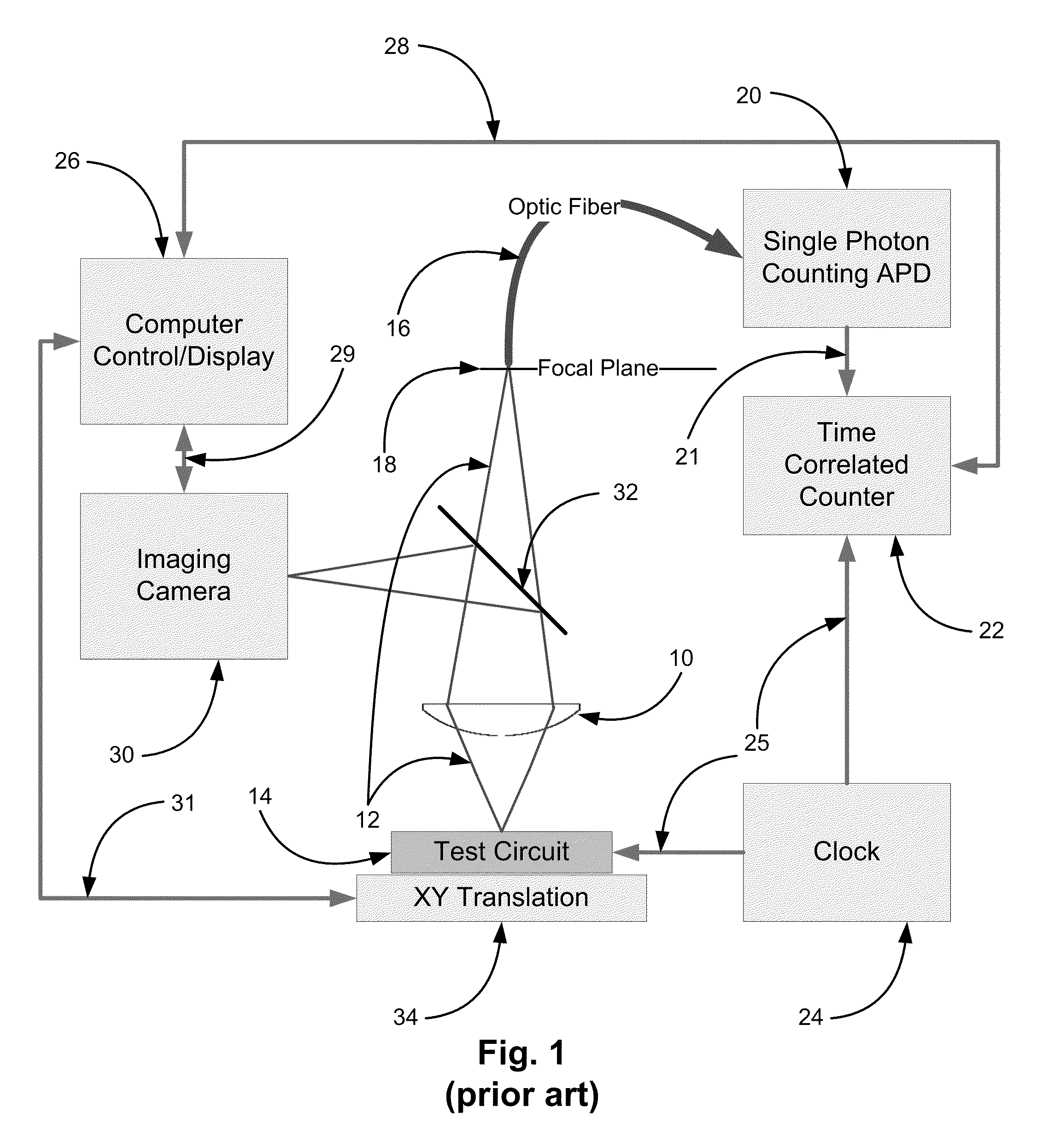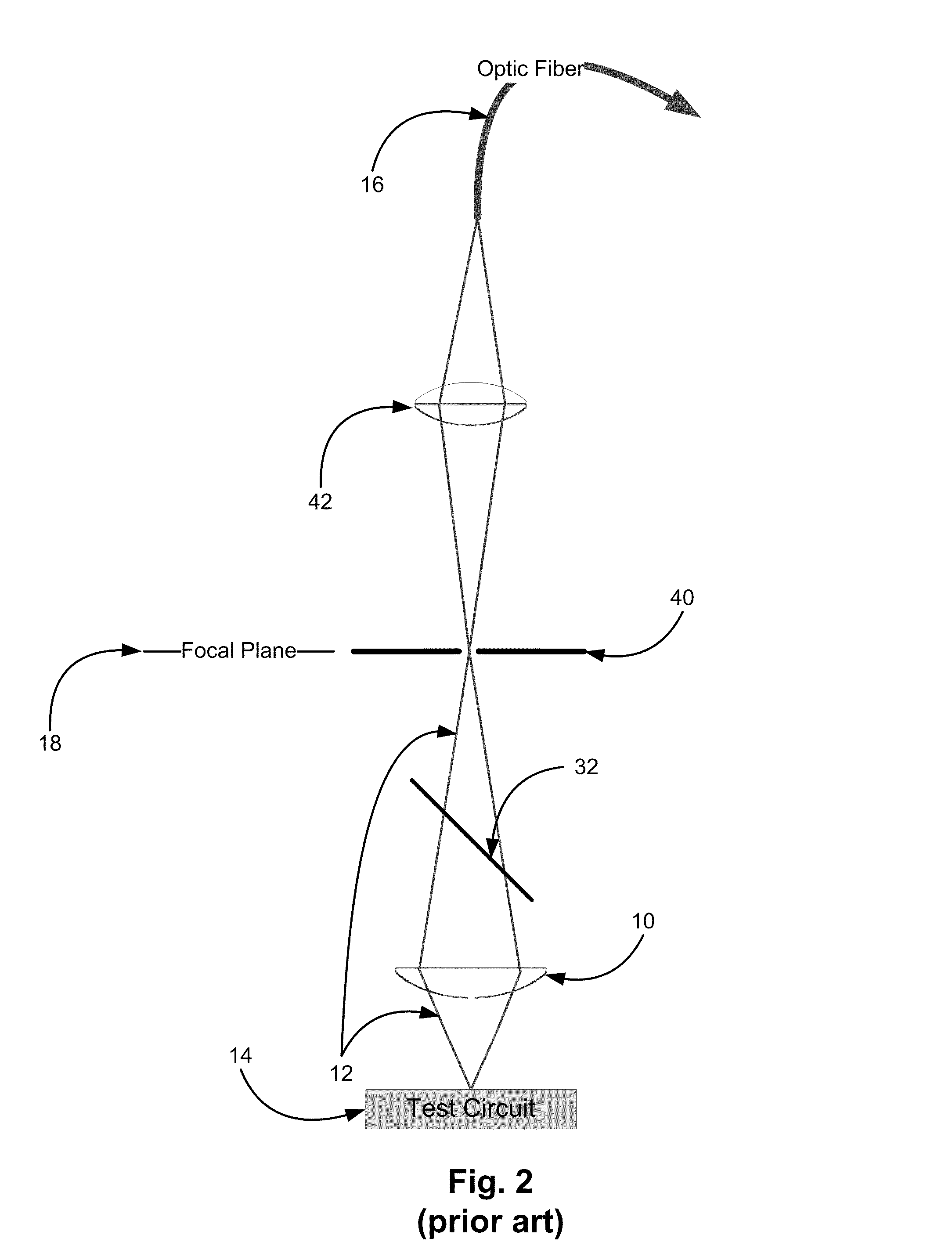Transient emission scanning microscopy
a scanning microscopy and emission technology, applied in the direction of electronic circuit testing, measurement devices, instruments, etc., can solve the problems of high-precision mechanical stages with sub-micron positioning accuracy, inability to address targets, and inability to align the laser imaging portion of the microscop
- Summary
- Abstract
- Description
- Claims
- Application Information
AI Technical Summary
Benefits of technology
Problems solved by technology
Method used
Image
Examples
Embodiment Construction
[0019]The prior art is first described in order to better clarify the differences with the current invention. FIG. 1 shows the basic components of a single-point transient-emission detection system as described in the first configuration of U.S. Pat. No. 5,940,545 and in U.S. Pat. No. 6,608,494. A microscope objective 10 focuses optical emission 12 from a test circuit 14 onto the end of an optical fiber 16 at the objective focal plane 18. The optical fiber 16 couples into a single photon counting detector 20 (e.g. an Avalanche Photodiode (APD)). Although the detector 20 could be placed directly into the focal plane 18, the use of an optical fiber 16 as fiber coupling adds flexibility to the design. Photons arriving at the detector 20 create an electrical pulse which is electrically connected 21 to a time correlated counter 22. The time correlated counter 22 records the pulse arrival time. The collection of several pulses allows the counter 22 to produce a histogram of the arrival ti...
PUM
 Login to View More
Login to View More Abstract
Description
Claims
Application Information
 Login to View More
Login to View More - R&D
- Intellectual Property
- Life Sciences
- Materials
- Tech Scout
- Unparalleled Data Quality
- Higher Quality Content
- 60% Fewer Hallucinations
Browse by: Latest US Patents, China's latest patents, Technical Efficacy Thesaurus, Application Domain, Technology Topic, Popular Technical Reports.
© 2025 PatSnap. All rights reserved.Legal|Privacy policy|Modern Slavery Act Transparency Statement|Sitemap|About US| Contact US: help@patsnap.com



